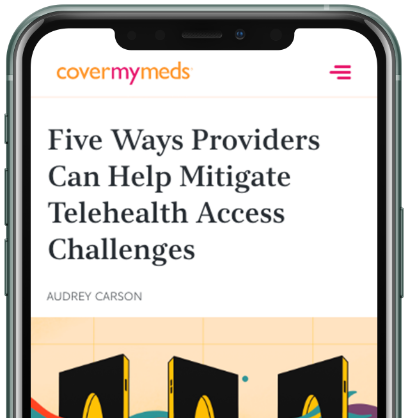Streamlining Alerts to Help Improve Patient Safety
The healthcare IT (HIT) industry is focused on delivering intelligent solutions to providers, pharmacists and payers to improve patient outcomes and quality of care. In this article, we consider the growing concern of alert fatigue for providers and pharmacists and examine its potential to damage job satisfaction and compromise patient safety.

American healthcare is continuously transformed by technological breakthroughs from the HIT sector. Notable developments over the past few decades include electronic health records (EHRs) to consolidate and simplify patient medical history, electronic prior authorization (ePA) to simplify the burdensome prior authorization (PA) process and various solutions for driving patient-specific care driven by scientific advancements like pharmacogenomics and personalized medicine.
These technologies are designed with the best of intentions to streamline provider workflow, reduce administrative inefficiencies or secure patient safety, and normally deliver on what they promise; nevertheless, well-meaning technologies can have detrimental, unforeseen consequences for end users.
When alerts go from helpful to harmful
Few examples of “good technology gone bad” are as striking and high-stakes as the alerts functionality integrated into pharmacy software and EHRs through computerized physician order entry (CPOE) and clinical decision support (CDS) systems.
Designed to prevent adverse drug events from the erroneous prescription of medications, such alerts can have positive effects on patient safety and quality of care. In fact, application of CPOE and CDS into clinical practice was shown to reduce non-missed-dose medication errors (i.e. medication not available for administration) and non-intercepted serious medication errors (i.e. incorrect medication reached the patient) by 81 and 86 percent, respectively, in a hospital setting.The Impact of Computerized Physician Order Entry on Medication Error Prevention
The initial success of such alert initiatives prompted the inclusion of additional alerts within the EHR to signal for drug allergy contraindications, basic dosing guidance, formulary decision support, duplicate therapy, drug-to-drug interactions and many other situations.Medication-related Clinical Decision Support in Computerized Provider Order Entry Systems Unfortunately, this has led to the inclusion of low-priority notifications that providers must also acknowledge. Recent studies have reported that providers spend over an hour a day sifting through nearly 80 notifications and alerts from their EHRs.The Burden of Inbox Notifications in Commercial Electronic Health Records To help put this in perspective, another study found that on average providers received 49 alerts for every 100 medications they prescribed.Alert Fatigue is an Alarming Problem, Optimum Healthcare IT
While this decreasing signal-to-noise ratio for alerts may not overtly seem like a problem, it has led to the unexpected trend of providers and pharmacists overriding many alerts that pop-up on their screens. Although most overrides are based on sound clinical judgement, the sheer volume of alerts compels that some are oversights, and that is the crux of alert fatigue. It's estimated that up to 90 percent of alerts are overridden and >75 percent of the time the override is inappapropriate.Overrides of Medication Alerts in Ambulatory CareMedication-Related Clinical Decision Support Alert Overrides in Inpatients
Important alerts can get accidentally dismissed
With so many alerts bombarding pharmacists and providers, important alerts can get accidentally dismissed. As an example, this June, a provider and pharmacist in Massachusetts missed an alert indicating that a patient was severely allergic to a prescribed pain reliever and the patient nearly died from the reaction.Alert Fatigue a Focus After Patient’s Drug Allergy Warning Missed, Healthcare Dive
Beyond the risk to patients and legal ramifications caused by alert fatigue, providers feel overwhelmed by EHR alerts to the point that they may quit their jobs, as indicated by a study correlating such alerts with job satisfaction.Electronic Alerts and Clinician Turnover: The Influence of User Acceptance Too many alerts create the potential for important clinical information to slip through the cracks and add unnecessary stress to users. Accordingly, careful user testing to identify and prioritize those alerts that get acknowledged by providers and pharmacists will help prevent unfortunate adverse drug events in the future.
Designing technology with the end user in mind
It's abundantly clear that alert fatigue is top-of-mind for providers and pharmacists. As leaders in HIT, we are responsible for ensuring that our technological developments only help those intended. For this reason, any CoverMyMeds solution is developed in close collaboration with stakeholders who will use it on a regular basis. Solutions like RxBenefit Clarity™; and ClinicalAlertsPlus™; are designed with providers and pharmacists in mind to supply a positive experience that simplifies workflow and helps deliver only actionable alerts for enhancing patient care.
As the industry steams forward, it will be ever more important to consider the best interests of stakeholders for providing authentic HIT solutions that promote interoperability and make life easier.
To learn more about healthcare IT, download the 2021 Medication Access Report: Healthcare Technology Edition.
The latest healthcare insights, floated right to your inbox.



